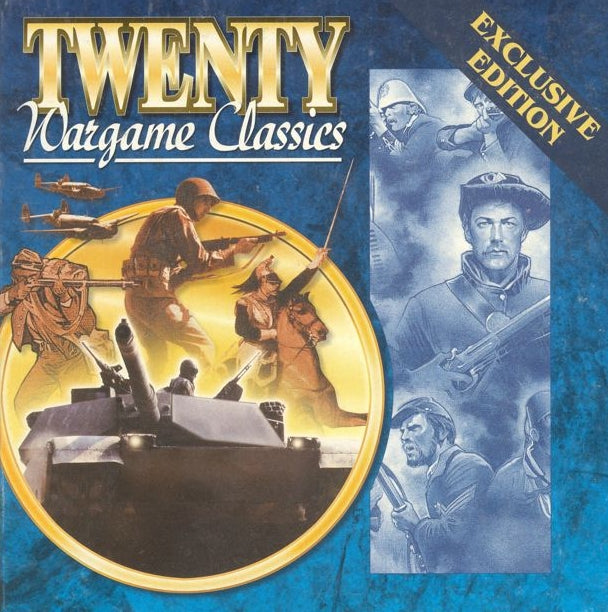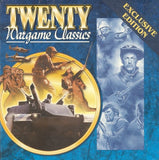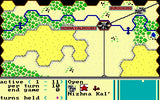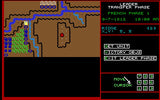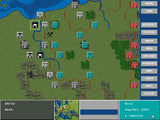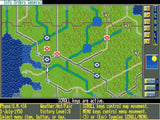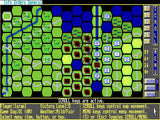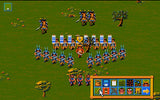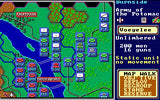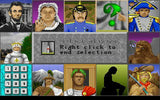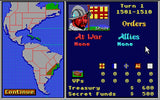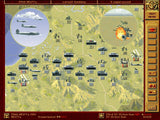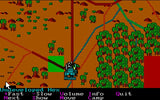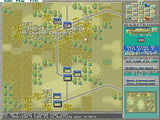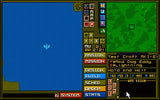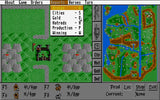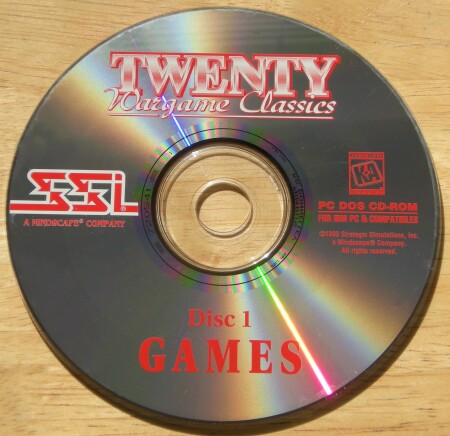
Actual Game
Twenty Wargame ClassicsBattles of NapoleonBattlefront Carrier Strike Clash of Steel Conflict Korea Conflict Middle East Conquest of Japan D-Day Decisive Battles Global Domination Gold of the Americas Pacific War Panzer General Reach for the Stars Sword of Aragon Tanks War in Russia Warlords 1 Western Front When Two Worlds War
1-Click Install
|
The Games
This is a fantastic collection from three of the premier wargame software houses from the mid 80s to mid 90s, namely, SSI. SSG and Impressions. As you will see the twelve games included in the collection touch on virtually the entire history of warfare from AD 1600 through Korea. The styles of the various games are as rich and diverse and the periods of history they cover. Taken as software, this collection accurately portrays the state of computerized wargaming from the formative years of the PC until just before the release of Windows 95. In other words, this collection represents classic gaming. Here follows a brief description of every title included in the Definitive Wargame Collection.
Battles of Napoleon (SSI 1989)
By far this game has the best AI of any title dealing with the Napoleonic conquests. Battles is also a very realistic war game and hosts the most famous battles of Napoleon's career, namely Borodino, Waterloo, Quatre Bras, and Auerstadt. A great feature is that you can design your own. You have the ability to play as either the French or the Allies. For both sides all aspects of the battles are present, from cavalry charges to artillery barrages, to infantry squares, and so on.
Realism, historical accuracy and AI counter-tactics come at a price. The sim has a rather steep learning curve. However, if you have the dedication to master it you will find Battles of Napoleon is unrivaled in its field, then or today.
Battlefront (SSG 1986 - 1995)
Panzer Battles
Rommel
Halls of Montezuma
MacArthur's War
For those not familiar with it, Battlefront is an operational level system that had been around for 10 years. The first games in the series were for the Commodore 64 and Apple II followed by the IBM and then the Mac. The best feature of the Battlefront series is that the user issues action orders (assault, defend, reserve, etc.) to groups of units but does not actually control each unit. While the unwanted actions of individual units can be maddening, I think the system accurately reflects command and control (or lack thereof) in World War II battles. The interface also made large battles easier to manage since the players weren't controlling each unit on a hex by hex basis.
Clash of Steel (SSI 1993)
Clash of Steel was made for those looking for an in-depth wargame that covers the entire spectrum of the European theater in World War II but don't want to invest months completing it. The entire war (on both European fronts) can be completed in less than ten hours assuming you're not a novice. The number of turns run from two to eleven with "phased" increments equaling two months of real time across a map that is displayed in hefty fifty mile hexes. Even though the interface accommodates both mouse and keyboard, there's no doubt that using the former is the way to go. Simply click on a unit followed by the desired destination and just that easily your movement is executed. It's even simpler on air strikes. Select the target, then the strike command, and the nearest available air unit will attempt to carry out your order. Of course, hex-by-hex movement is still an option if you like to ride with your troops across the multi-faceted, realistic terrain. The game fairly represents both sides of the conflict so if you're hankering to rewrite history with a German victory, go for it! The challenges offered by Clash of Steel are steeply ingrained with tons of accurate logistical information, equipment, forces, weather considerations, personnel and optional campaign lengths (six different start dates are supported).
Conflict Korea (SSI 1992)
Conflict: Korea is an operational level simulation of the Korean War. In addition to covering the first year of that conflict between 25 June 1950 to 22 May 1951, there is a hypothetical scenario which sees hostilities resuming between the two Koreas in 1995.
Four scenarios can be played, taking either side. The first three are based on the historical conflict - The Dragon Wakes (Jun 1950 - Jun 1951), starting with the invasion of South Korea by the North Korean People's Army; Operation Chromite (Sep 1960 - Jun 1951), re-enacting MacArthur's inspired Inchon landings and the Pusan perimeter break-out; and Cold Steel (Nov 1950 - Jun 1951), showcasing the massive intervention by the Chinese People's Liberation Army. The final scenario, Tomorrow's War, has the NKPA pushing south in 1995 when the US is heavily involved elsewhere and plays a limited role (although the presence of USAF, USN, and USMC air units more than make up for the absence of land forces).
Conflict Middle East (SSI 1991)
Subtitled "The Arab-Israeli Wars: 1973-?", Conflict: Middle East is SSI's detailed and authoritative simulation of both the Yom Kippur War of 1973, and a hypothetical all-out Arab attack launched sometime "during the Nineties."
The campaigns are fought on a detailed brigade/division/squadron level, across a richly colored hex-grid map of the middle east that stretches from Cairo to Damascus. Victory points are awarded for terrain possession, and some games are interrupted by political intervention from the outside world. You have the option to override this game's interrupts and continue hammering the enemy, but in that case the victory conditions are no longer valid.
Conquest of Japan (Impressions 1992)
Conquest of Japan is a strategy title in which you must conquer your opponents cities on the Island of Honshu in 16th century Japan. The ten cities must be occupied to win, you do this by forming armies to defend your five cities and attack those of your opponent. When a city is taken, any mobile army that came from that city is automatically disbanded. In this way, potentially overwhelming forces can be routed by conquering their cities -- but only if you can conquer the city before its army reaches its target. Depending on how the cities are located at the start of the game, you may find this to be a key part of your campaign strategy. When armies battle, the game switches from the strategic map, to a tactical one. Formations, unit orders, and moral are factors in the tactical battles. Overall an interesting offering from Impressions.
D-Day: The Beginning of the End (Impressions 1994)
As you might expect this is a strategy wargame in which you re-enact the Allied invasion of Fortress Europe in 1944. D-Day was initially stereotyped as a real-time arcade game but that is quite inaccurate. It is not real-time in the same way as a flight-sim or arcade-fest. All of the player's actions and commands take place while game time is paused. The real-time element of D-Day is in how the game responds to your orders; after you take all the time you want to survey the situation, and make the appropriate command decisions, you unpause the simulation and watch your units respond to your orders in real-time. As time passes, if events progress to the point that you want to enter new orders, you can pause the game instantly.
Only one part of D-Day features this real-time element. D-Day simulates both a grand strategic view of the Normandy campaign, and a tactical view of each battle fought in that campaign. Only the tactical, Micro Miniatures level of the game is in real-time; the grand strategic level is turn-based, with each turn representing half of a day. The scope of the grand strategic view (the whole of central Europe is represented, from England to Germany) makes it a natural for turn-based play. As you can infer, D-Day is aimed at the more serious fan of the genre.
Decisive Battles in American Civil War (SSG 1989, 1990, 1992)
Volumes I - III
Decisive Battles in American Civil War games were an early attempt by SSG to offer an accurate portrayal of a war pushed back into the limelight many years later with Sid Meier's Gettysburg. Even if Decisive Battles does not have impressive 3D graphics and sounds, the collection is still a solid campaign that accurately reconstructs the most crucial battles of the American Civil War. The underlying engine is basically the same throughout the series, with improvements to the graphics and interface in each volume, which gives a feel of familiarity to gamers. The AI is an evolved version of SSG's celebrated Battlefront system. The system works well in this context in that you can select every single unit or entire groups of units under the command of a leader.
As you might expect, leaders are particularly important for the resolution of the battle. The simulation takes into consideration the effects of terrain and weather, and the ability of each leader is either enhanced or penalized based on his current situation.
Global Domination (Impressions 1994)
Global Domination is almost always called a risk type game, which it is in the same way that History of the World, Axis and Allies, and Diplomacy are, in that you are one of several countries that try to take over an area based map with generic playing pieces.
Each of the above games has a twist on the concept, and Global Domination's is a tactical one. You build armies out of different kinds of forces (infantry, mech. infantry, airmobile infantry, light armor, heavy armor, light artillery, heavy artillery, air combat, air strike, air defense) and send them off to fight. They fight either in one abstract combat, a more prolonged abstract combat that can take several turns (and permits you to pull troops out at a penalty), or a miniatures-style combat.
The movement system is unique among computer games of the time. Each turn, you invest resources in buying land and sea movement for the next turn. In the early turns especially, this can be your largest expenditure, and thus calls for quite a bit of forethought.
All in all, quite a bit of fun.
Gold of the Americas (SSG 1989)
One of the few SSG classics that are not based on World War II, Gold of the Americas is an excellent strategy/conquest game set in the Americas. Unlike better-known games of this gene (e.g. Sid Meier's Colonization, Pirates!), Gold emphasizes strategic-level decisions and diplomacy over tactical-level colony management.
Overall, Gold is a great strategy game that is both historically accurate and addictive. Perfect for fans of SSI's No Greater Glory, and SSG fans in general. SSG's famous AI does not disappoint; it is one of the best AIs you'll find in this type of game, bar none.
Pacific War (SSI 1992)
The complexity of Gary Grigsby's Pacific War will test the tenacity of any veteran wargamer brave enough to tackle it. With that in mind, any novice or weekend warrior is forewarned to enter at your own risk. The time spent learning every aspect of this game may literally exceed that of the playing time for other war games. Examples of the incredible detail associated with the game include: more than 100 Allied and 50 Japanese ships, each with at least ten rated attributes; fifty or so checks to perform during the orders phase (includes half a dozen categories); around forty basic checks during the execution phase; nearly 200 bases and more than 300 identifiable ground units to control; more than 200 leaders, a full complement of combat aircraft, a manual that runs 160 pages and a gaming world that covers the entire Pacific theater of World War II from Asia to Australia to the United States. There's a five page tutorial included with the manual which easily could have (and should have) equaled the fifty-plus pages of rules. Gary Grigsby's Pacific War is definitely not for the casual gamer who wants to pop in and out of the game a few times and walk away whistling a happy tune of satisfaction. To succeed at the game requires a self-disciplined serious commitment to invest lots of study time on how to play comfortably.
The game covers the entire length of WWII in the Pacific arena (December 7, 1941 to August 1945) in a huge week-at-a-turn campaign and provides a good number of shorter "full war" experiences dependent upon when you "enter" the war. A couple of even shorter scenarios (4-months and 2-months) are available if desired. Gary Grigsby's Pacific War is highly recommended but it's not a simple walk in the park.
Panzer General (SSI 1994)
The Generals series, which began with Panzer General, is hailed as the best wargame series produced by S.S.I.
Panzer General possesses magnificent graphics for a wargame of 1990s vintage. The units are easily recognized thanks to the special attention given to detail, and the strategic maps where the forces advance from are of impeccable quality. This CD version of the game adds bonuses like authentic video-footage from the WWII archives, and CD quality sound for music and sound effects. Of course, these features are expected in modern games. However, in 1994, such audio/video attention for a wargame was exceptionally rare.
If you have never played a wargame because you think they are all boring and impossible to understand, this is the game that will change your mind. If you are a die-hard wargamer, Panzer General may still be an interesting proof of what it takes to draw in a non-wargamer without sacrificing the gist of what makes a wargame fun. A classic even after 15 years.
Reach for the Stars (SSG 1988)
Reach for the Stars is the original spaceploitation game. The player has the opportunity to name his civilization and those of his (up to three) AI opponents before he begins his attempt at galactic domination. The game is sleek and accessible by modern standards: the 2D galaxy map is marked only by planets and their names in few different colors. Also, there is no diplomacy and no player control over tactical combat.
What remains is a hard-core game of grand strategic and economic production. The player must tweak his planets, build ships, research new tech levels, and deploy fleets. A nice feature of the game is that just about all of the underlying dynamics can be altered and customized by the player, which means that Reach for the Stars is infinitely replayable.
Sword of Aragon (SSI 1989)
Regarded by many wargamers as the best fantasy wargame ever made, Sword of Aragon is a true precursor of later classics Conquered Kingdoms and SSI's own Fantasy General. Set in the Aragonian Empire, you are heir of the late Duke of Aladda, and your task is to once again extend Aladda's dominion and eventually crown yourself king in Tetrada. Executing your father's will properly means raising and equipping an army, then venturing forth to do battle against the dastardly foes threatening Aladda and its surroundings. Your success in Sword of Aragon depends on careful allocation of precious resources, astute military planning, and deft combat maneuvers. Knights, priests, warriors, mages, rangers, cavalry, infantry, and bowmen are some of the units you can recruit, and in true AD&D fashion, you can equip them with different armor types. Nothing in the game will strike anyone today as a big deal, but back in 1989 it was a revolutionary title that attracted many non-wargamers to the genre. Excellent AI and addictive gameplay help Sword of Aragon remain one of the most playable and replayable fantasy wargames ever.
War in Russia (SSI 1993)
War in Russa covers the epic struggle between Germany and Russia 1941-45. The game was designed by Gary Grigsby, the most prolific wargame designer in the relatively short history of computer wargaming. This is Mr. Grigsby's third treatment of this subject for SSI. The first, with the same title, was an 8-bit effort in 1984. In 1990 came Second Front, one of the first of the 16-bit wargames (along with 360's Harpoon and Panther's Fire Brigade.) War in Russia owes much of it's structure to this second effort. In reviewing this game it will thus be necessary to compare many of it's features to this classic predecessor.
For its time WIR was THE wargame covering the eastern front. For scope, detail, and options it simply has no competition. While WIR essentially uses the same game system and data base that Second Front did it has so many new features, refinements and improvements that it is well worth the investment for wargamer interested in the period, even if he or she already has Second Front. This period of time seems to be the age of the sequel, be it movie, book or game. Games such as Carriers at War, Railroad Tycoon, Warlords and Pirates have had sequels released relatively soon after the initial product. In terms of overall value War in Russia more than holds it's own as an improvement over an existing game system.
Wargame Construction Set II: Tanks (SSI 1994)
Tanks is a tactical (platoon/section level) wargame of the 20th century mechanized warfare. The players in Tanks! control brigade or regiment sized forces in most scenarios. The game is played on a very high quality hex-style board representing some real battle area in the world. The scale of the map is 250 meters/hex and the game is played in turns, with 5 minutes per turn. The game can be played in a 'mission mode' or a full campaign. In the campaign, conditions of subsequent missions are dependent upon the results of previous missions. The game goal is simple - take out your enemy and his flag while protecting your own. This is classic wargaming at its tactical level best.
In short, Tanks offers essentially limitless small scale tactical armored confrontations using the various tanks and tools of mechanized warfare from 1918-1991; a fun outing.
Warlords 1 (SSG 1990)
In Warlords, SSG's designers took a break from historical data-crunching and produced a huge, make-believe strategy game that sprawls across a vast area and pits you against eight crafty, aggressive opponents. The quarrelsome land of Illuria has been held together by a ramshackle peace treaty which has just collapsed as the game begins. Each of the eight warring fiefdoms has but one objective: total domination of all the others, which means conquering eighty fortified cities and stomping seven opposing armies.
Warlords may be easy to learn, but it's a big game indeed. Some campaigns will spread out over two or three days before a winner begins to emerge. After a few fairly slow turns at the start, in which everybody pillages neutral cities and decides whom to invade first, the games tend to pick up great speed and to become elaborate and sometimes unpredictable. In short, the game is great bloodthirsty fun to play, and as addictive as Empire. Despite its fantasy trappings, it's a classic game of grand strategy, designed by veteran gamesters who really knew what they were doing.
When Two Worlds War (Impressions 1993)
Impressions' conquer-the-universe game is essentially a sequel to Global Domination. It is also not your typical divide and conquer game. Players have three different maps on which to play. Their homeworld, space, and the enemies homeworld (all three use a 100x100 square grid). The game may be played in two different modes, real-time and turn based. Real-time adds an element of excitement to the game, no longer must the player twiddle his thumbs while waiting for the computer to make up its mind. The player must act quickly to avoid defeat at the hands of the computer or another player. For those who find real time play too quick or too difficult, there is a pause button or the option of turn based combat.
In short 'When Two Worlds War' offers hours of challenge. In addition to the missions supplied with the game, you can create your own worlds (generated either randomly or according to parameters set by you) and scenarios. Campaigns are possible by managing one world through conflicts with several opponent worlds. You can conquer the entire galaxy if you are good enough.
Western Front (SSI 1991)
For those fans of the previous war game Second Front from SSI, Inc., the graphical presentation of Western Front: The Liberation of Europe 1944-45 will seem very familiar. As for the interface, the current title introduces full mouse support which makes game play much simpler with an increased comfort factor due to the point and click nature of operations. Speaking of operations, the game undoubtedly will be enjoyed and played to its fullest extent by war gamers who like their simulations to be detailed and time intensive. Even though there are three major scenarios in the game, the full effect of recreating (or changing) history isn't realized unless the campaign mode is invoked. Be warned, however, that playing at the campaign level will take even expert war gamers well over a hundred hours (and quite possibly much longer) to complete the arduous task of running operations from the Normandy invasion through the end of the war.
For the most part, playing as either Allied or German forces immerses you in warfare up to your neck and requires significant planning time and careful execution. The three main scenarios are Diadem (the Italian aspect), Breakout (which chronicles Patton's move to the Rhine River) and the Ardennes action revolving around Luxembourg and Belgium at the Battle of the Bulge. Again, you get a better feel of involvement by playing the campaign mode although the individual scenarios are interesting in their own right. Albeit massive in scope, Western Front: The Liberation of Europe 1944-45 manages to nail down the essential "feel" necessary for a game of this type to be enjoyable to play. Graphics are not particularly flashy but are suitable for a hex-based war game and the lack of memorable sound or music isn't a distracting factor. Bottom line: the game offers a serious and complex yet gritty and enjoyable experience.
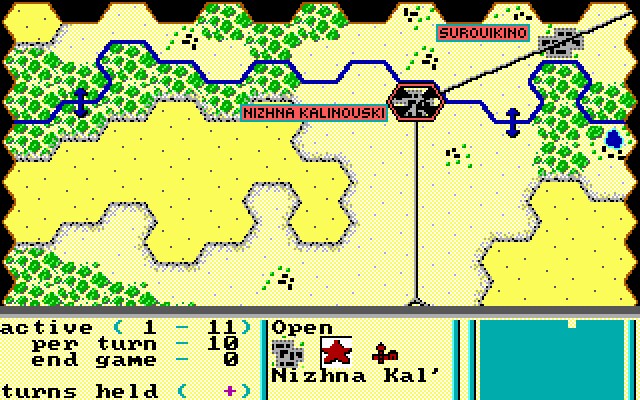
Battlefront
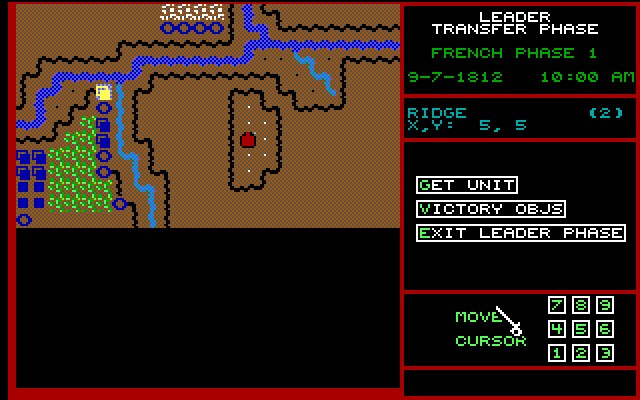
Battles of Napoleon
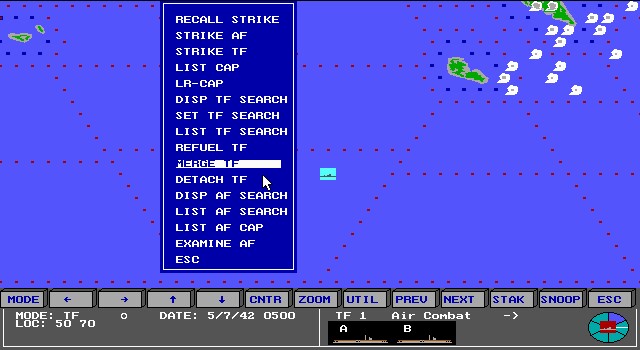
Carrier Strike
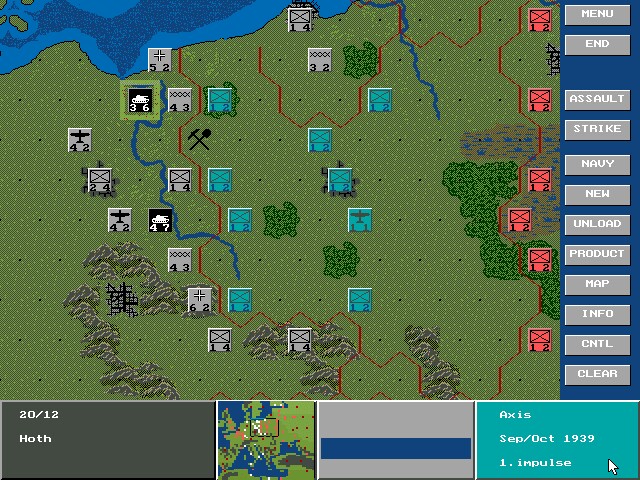
Clash of Steel
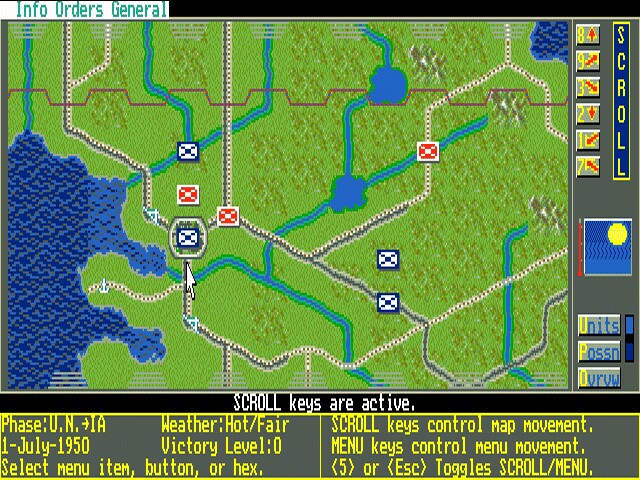
Conflict Korea
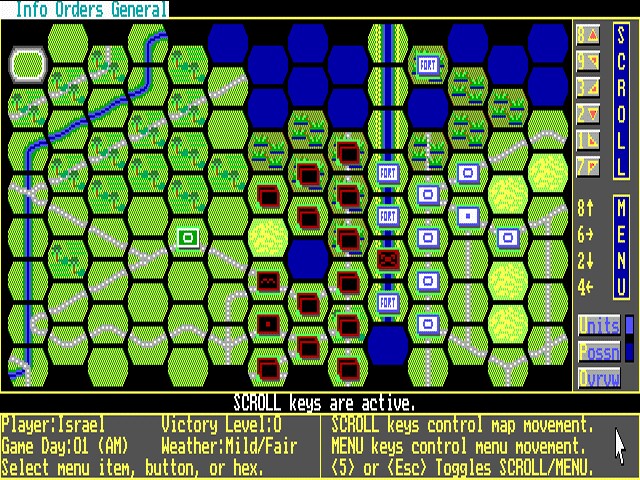
Conflict Middle East
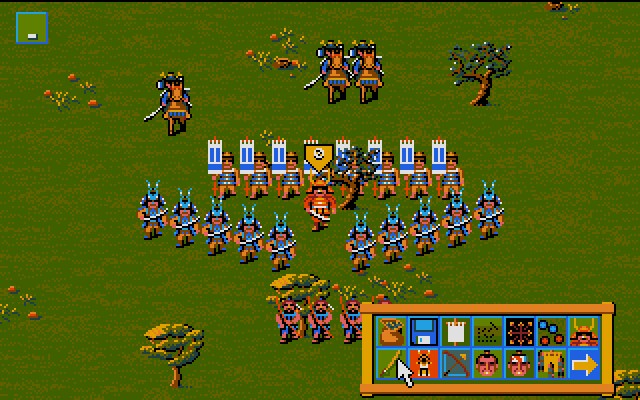
Conquest of Japan
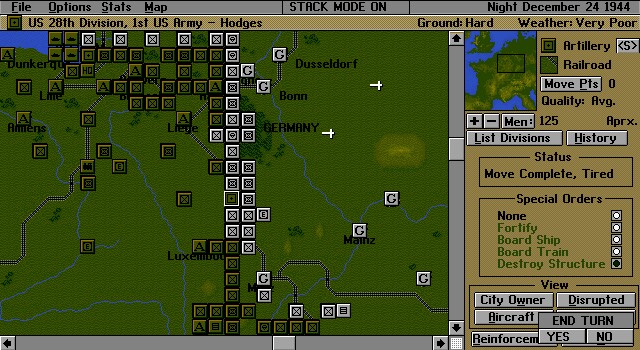
D-Day: The Beginning of the End
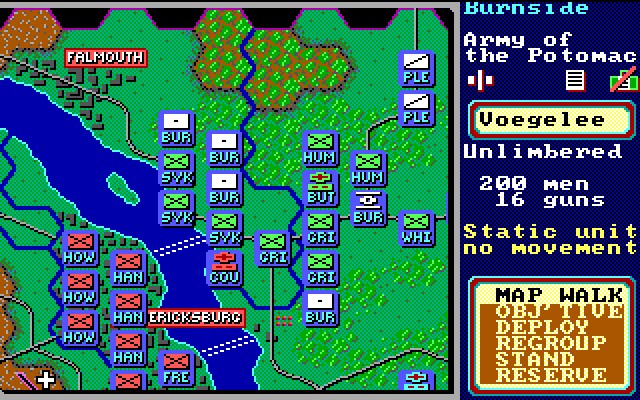
Decisive Battles of the American Civil War
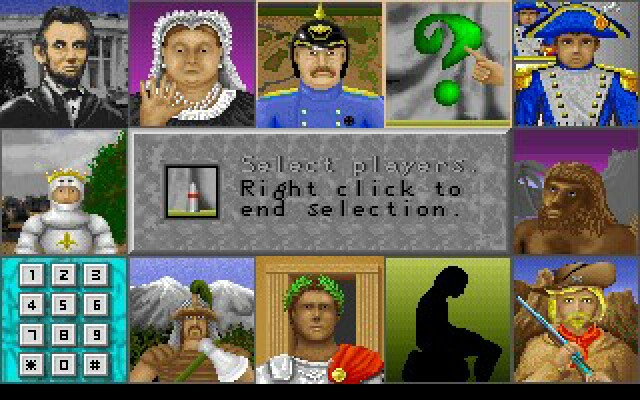
Global Domination
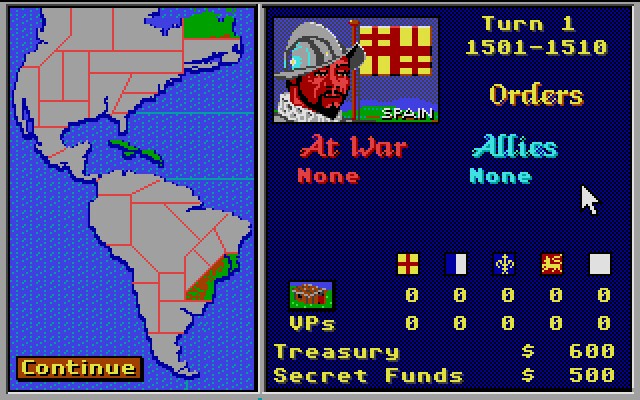
Gold of the Americas
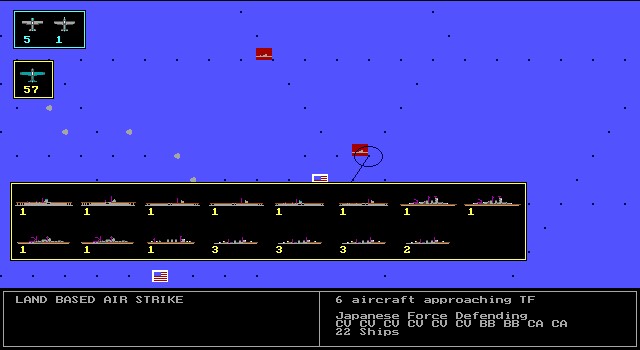
Pacific War
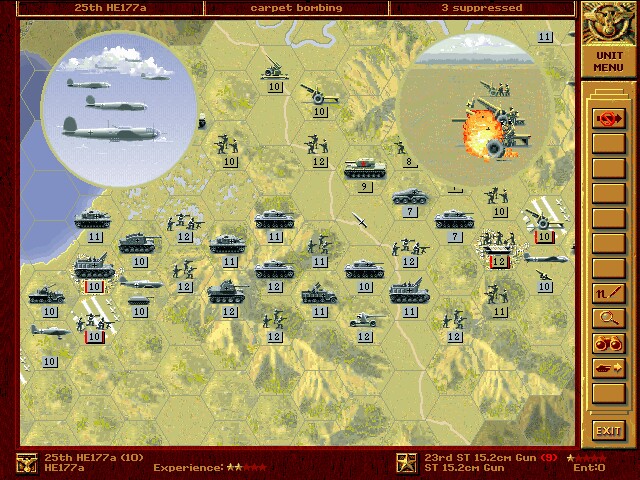
Panzer General
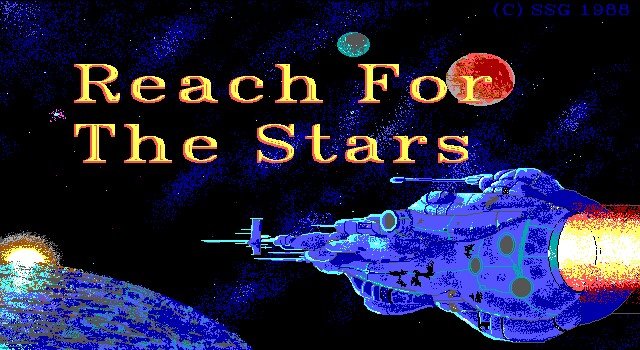
Reach for the Stars
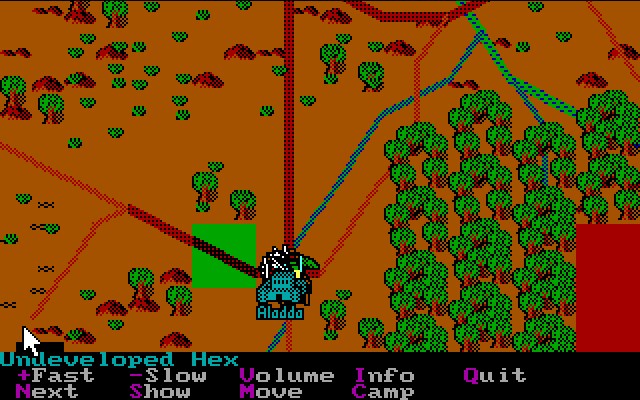
Sword of Aragon
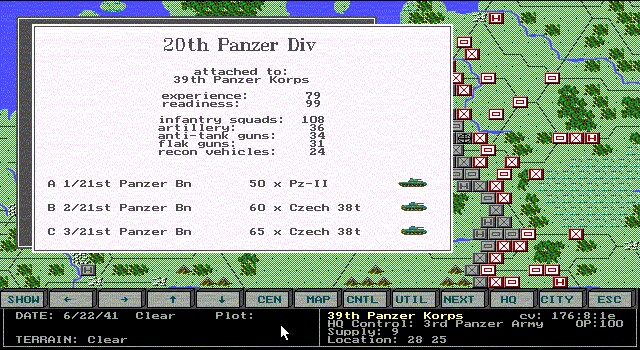
War in Russia
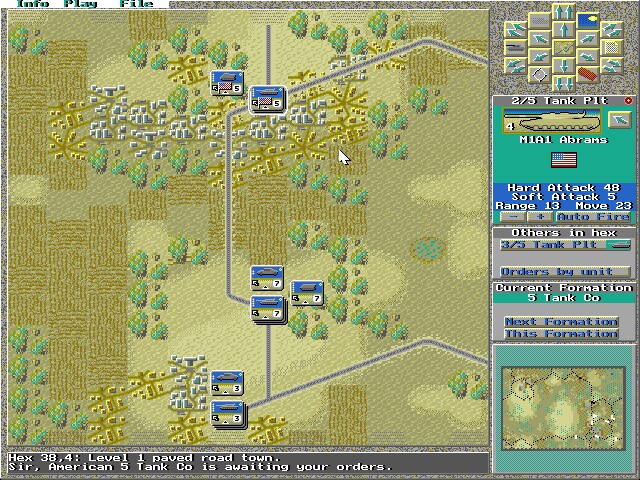
Wargame Construction Set II: Tanks
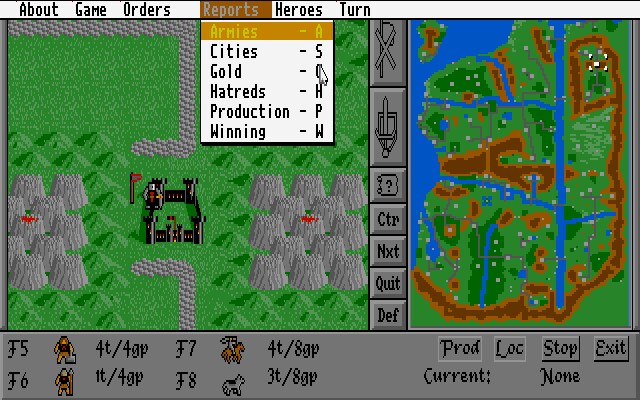
Warlords
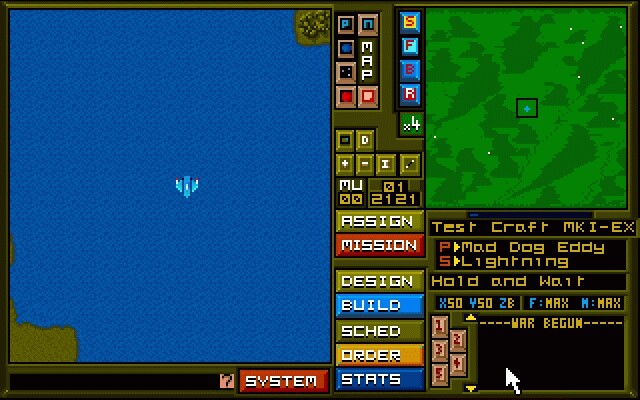
When Two Worlds War
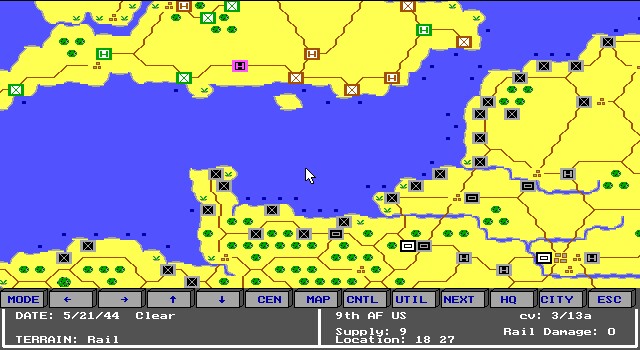
Western Front

